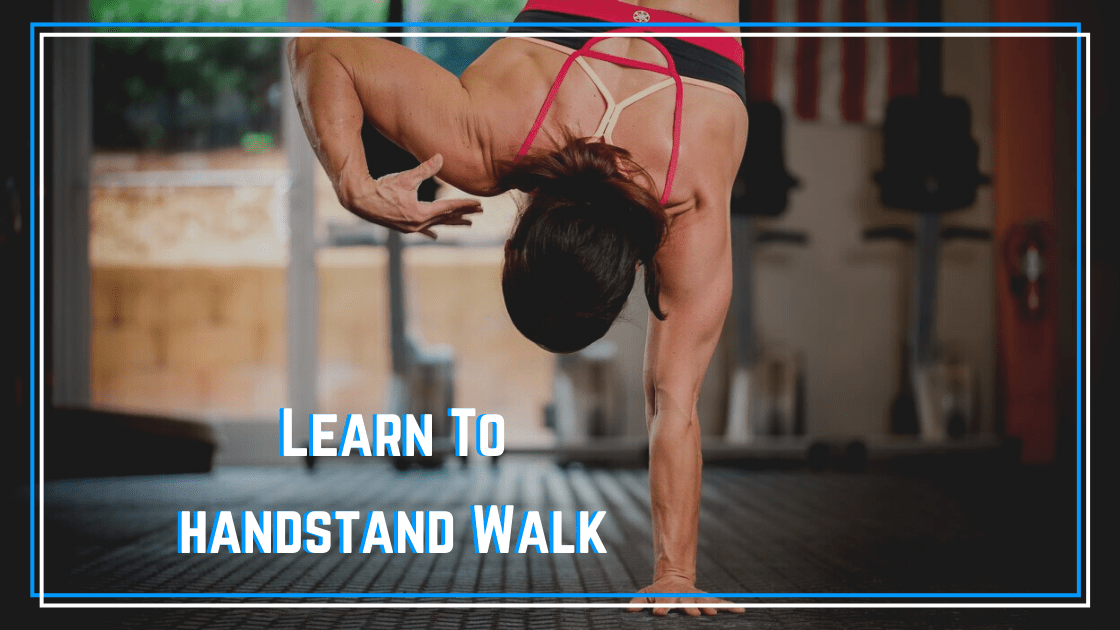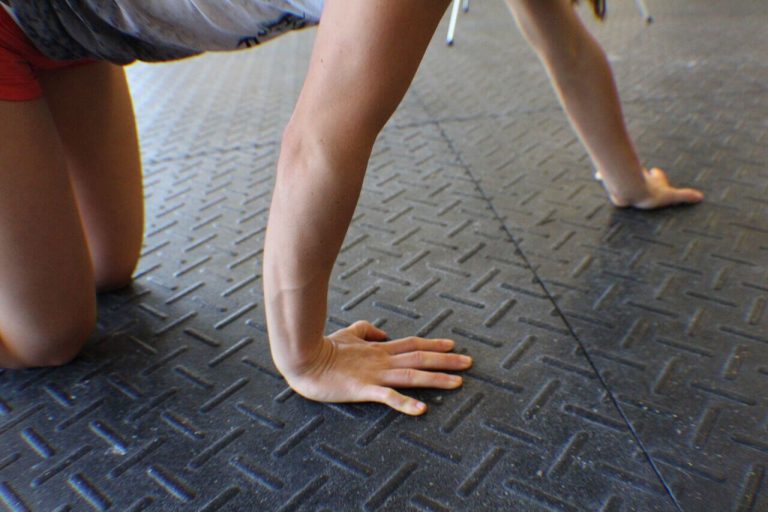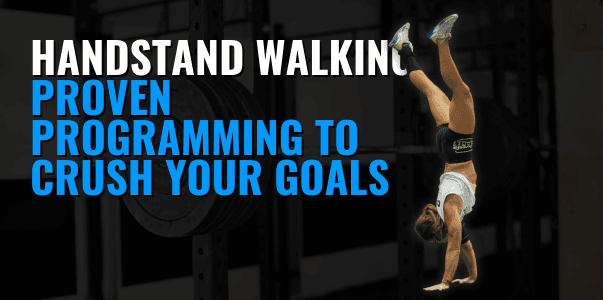For many athletes, the transition from holding a handstand against, to freestanding, and then ultimately learning to handstand walk can be a challenging progression. Handstand walking requires significant strength, coordination, and mobility to accomplish. Our handstand walk progression will help get you there!
If you are ready to get serious about mastering handstand walking, our Handstand Walking Program. This four-week program has helped hundreds of athletes to increase their handstand walking performance.
Learning to Handstand Walk
Step One: Understand the Concept of Stacking
To maximize our strength in the inverted position we get in for handstand walking, we have to understand how stacking our joints on top of each other will enhance performance. When we position our shoulders directly over the hands, with a neutral spine position and hips centered over the shoulder, we have “stacked” the body. This allows for increased stability when inverted so our joints can better assist inversion, and our muscles can focus on not just holding but propelling us forward.
Those athletes that are more efficient in their handstand walk positioning will demonstrate this stacked position, and those that do not will find walking considerably more taxing.
Most commonly, we see the shoulder and thoracic spine mobility is limited, resulting in suboptimal positioning. To test these, we’ll use the back to wall shoulder flexion test. Sit with legs crossed and back flat on a wall. Grab a PVC pipe with a shoulder-width grip and palms down. Now see if you can fully open your shoulder up so that your arms make contact with the wall without your elbows bending. If you can, your overhead mobility is excellent. If not, we’ll need to work on improving your positioning for more efficiency in your handstand walk.
We’ll also look at wrist mobility, as this will sometimes alter the positioning of the body.
To test wrist mobility, start with your hand flat on the ground with the elbow extended. Move your upper body forward and see how far over your fingers your shoulder can get. We should be able to get the forearm to being positioned vertically above the wrist joint. If not, wrist mobility will need to be addressed with either soft tissue work or joint mobilizations.
Handstand Walk Progression Step Two: Learning to Shift Weight
An athlete needs to understand how to shift weight while staying balanced. Not only is it essential to gain muscle memory, but also confidence. Hence, drills are an essential part of the handstand walking process.
To shift weight efficiently, the athlete needs to cue the shoulder to stay “active” which means the muscles have to be “doing work.” In order to fire up the right muscles, cue the athlete to “push the earth down.” We also want to squeeze glutes to stabilize our trunk.
The wall obstacle drill will not only cue athletes to shift the weight, but it will teach them to cue the right muscles as they move up and down the obstacle. When performing this drill, make sure you go the equal distance to the right as you do to the left. Start with low plates and then you can increase the obstacle by increasing the height of the plates and the length of the obstacle. We will be facing belly to the wall so the athlete can continue practicing a stacked position.
Step 3: Getting Balanced and Then Walking
Often athletes try to kick up and begin walking before their hips are even stacked over their hands. If the hips are behind the hands, you will just fall back into the start position because the shoulder angle doesn’t have time to open fully and the majority of your weight is behind your shoulders & hands. Therefore, this drill focuses on building a balanced and stacked position before walking. By using the wall, instead of kicking up, it trains the athlete to build better spatial awareness. This way, when they are ready to kick up into a handstand walk, they will wait until the hip is stacked over hands before starting to move the hands forward.
Step 4: Repetition
It is important to understand that this skill takes time to learn and master. Repetition is vital for training any skill because it will build muscle memory, strength and body awareness. If you lack mobility, you will struggle, which will lead to frustration, which will halt your process. So get mobile-first and then work on technique and strength. This way you will be confident that you have great balance and control and ready to crush a PR in your handstand walk.









